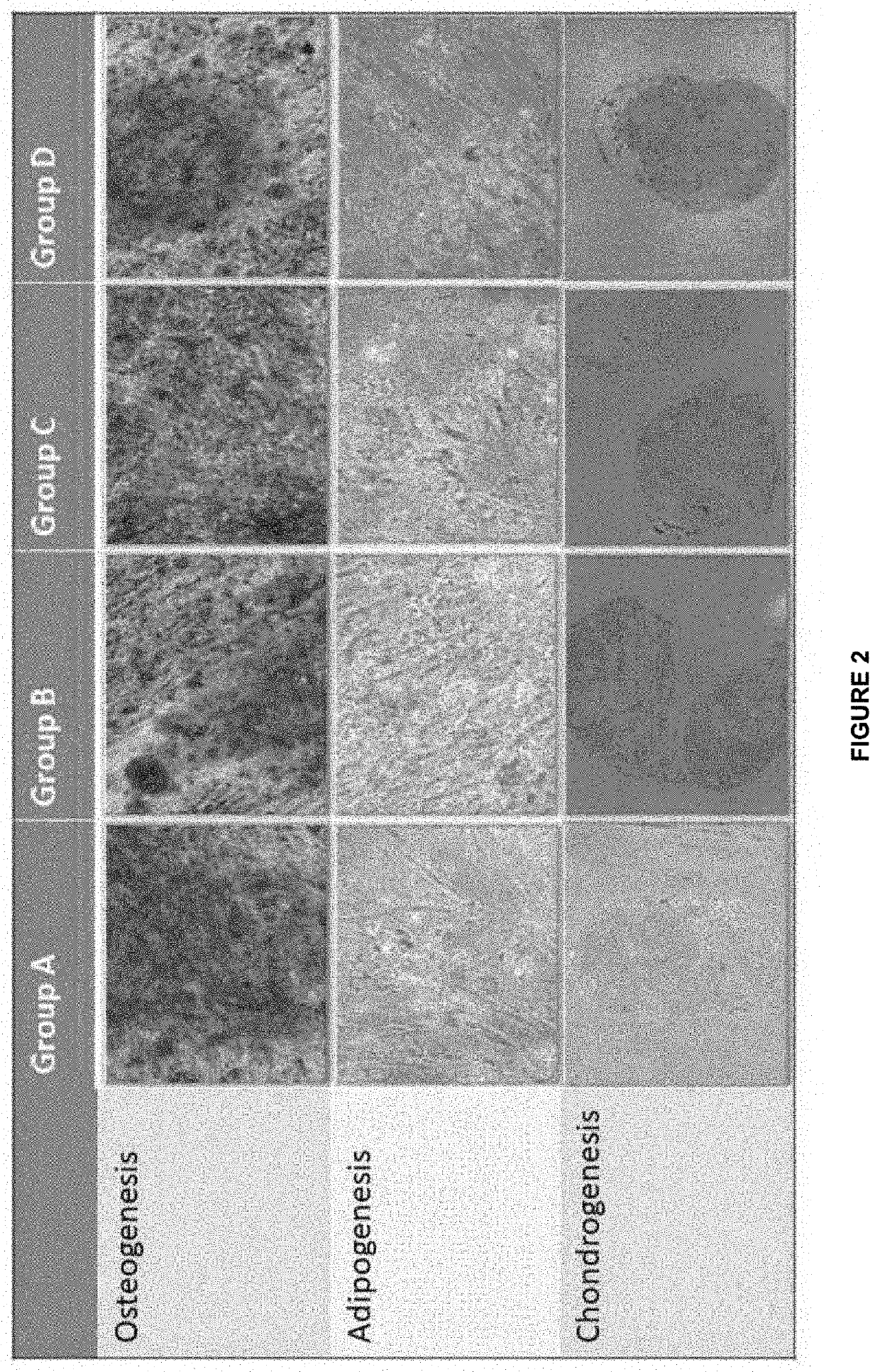Production of therapeutics potential mesenchymal stem cells
a technology stem cells, which is applied in the field of production of mesenchymal stem cells to achieve the effect of demonstrating genetic implications, inconsistency in laboratory culture media types, and inconvenient us
- Summary
- Abstract
- Description
- Claims
- Application Information
AI Technical Summary
Problems solved by technology
Method used
Image
Examples
example 1
Isolation and Culturing of WJ-MSCs
[0024]All umbilical cord specimens used in these inventions were donor consented for research purposes Human mesenchymal stem cells were isolated from human umbilical cord specifically from Wharton's jelly by using enzymatic digestion method. Briefly, umbilical cords were sliced into small pieces and incubated with 40 ml of 1% collagenase I digestive solution in a shaking incubator at a temperature of 37° C. for a period of 2 hours. After 2 hours, the mixture of digestive solution was centrifuged at 600 Relative Centrifugal Force (RCF) for a period of 10 minutes. Supernatant were discarded and pellet were washed with Phosphate-buffered saline (PBS). The pellet was centrifuged again at 600 RCF for a period of 10 minutes. The final supernatant was discarded and pellet was re-suspended with a standard culture media. The culture media comprises of Dulbecco's Modified Eagle's media (DMEM), human platlet Lysate in the range of 3-10% of the final volume, a...
example 2
Expansion of WJ-MSCs from Passage 0-Passage 2
[0025]The T-175 cm2 culture flasks containing PO cells were transferred into cleaned and sterilized Biological Safety Cabinet (BSC). PBS was used for rinsing upon removing all conditioned media from culture flasks via serological pipettes. The flasks were left for a period of 1 minute and the PBS was discarded into a waste beaker and later added with 10 mL of disassociate enzyme into flask and incubated at a temperature of 37° C. in 5% humidified CO2 incubator for less than a period of 10 minutes. Cells were observed under inverted microscope for round and floating cells to confirm complete cells detachment. Cell suspension was transferred into a new 50 mL centrifuge tube and centrifuged at 600 RCF for 10 minutes at a temperature of 20° C.±2° C. The supernatant was discarded into waste beaker and 20 mL of Conditioned Culture Media (CCM) was added into the tube to re-suspend the pellet. After performing cell count, the cells were cultured ...
example3
Complete Culture Media Composition Used in this Study
[0026]Human mesenchymal stem cells from P2 from the cryopreservation tank were thawed and expanded to P6 in four different culture media, namely Media A, Media B, Media C and Media D containing combinations of platelet lysate, supplements and serum free components. The media composition of the four different media is listed in Table 1.
TABLE 1Composition of complete culture mediaRange of MediaComposition in FinalVolumeMedia ADMEM basal media84.0-96.0% Platelet Lysate3.0-10.0% Antibiotic and Antimycotic0.5-3.0%Glutamax0.5-3.0%Media BDMEM-KO basal media84.0-96.0% Platelet Lysate3.0-10.0% Antibiotic and Antimycotic0.5-3.0%Glutamax0.5-3.0%Media CSFM Xeno Free basal media93.0-98.0% SFM Xeno Free supplement 1.0%Antibiotic and Antimycotic0.5-3.0%Glutamax0.5-3.0%Media DSFM Xeno Free basal media88.0-97.0% SFM Xeno Free supplement 1.0%Platelet Lysate1.0-5.0%Antibiotic and Antimycotic0.5-3.0%Glutamax0.5-3.0%
PUM
| Property | Measurement | Unit |
|---|---|---|
| temperature | aaaaa | aaaaa |
| temperature | aaaaa | aaaaa |
| temperature | aaaaa | aaaaa |
Abstract
Description
Claims
Application Information
 Login to view more
Login to view more - R&D Engineer
- R&D Manager
- IP Professional
- Industry Leading Data Capabilities
- Powerful AI technology
- Patent DNA Extraction
Browse by: Latest US Patents, China's latest patents, Technical Efficacy Thesaurus, Application Domain, Technology Topic.
© 2024 PatSnap. All rights reserved.Legal|Privacy policy|Modern Slavery Act Transparency Statement|Sitemap



